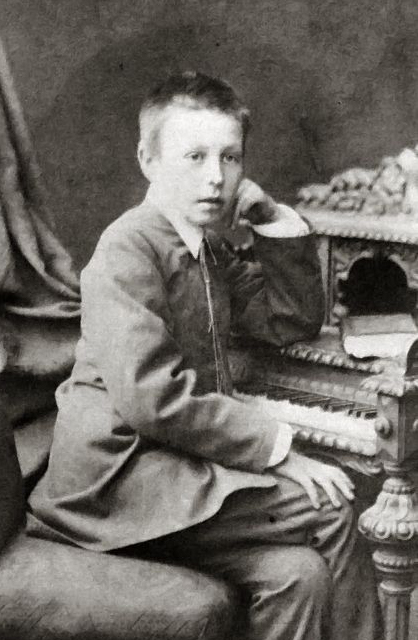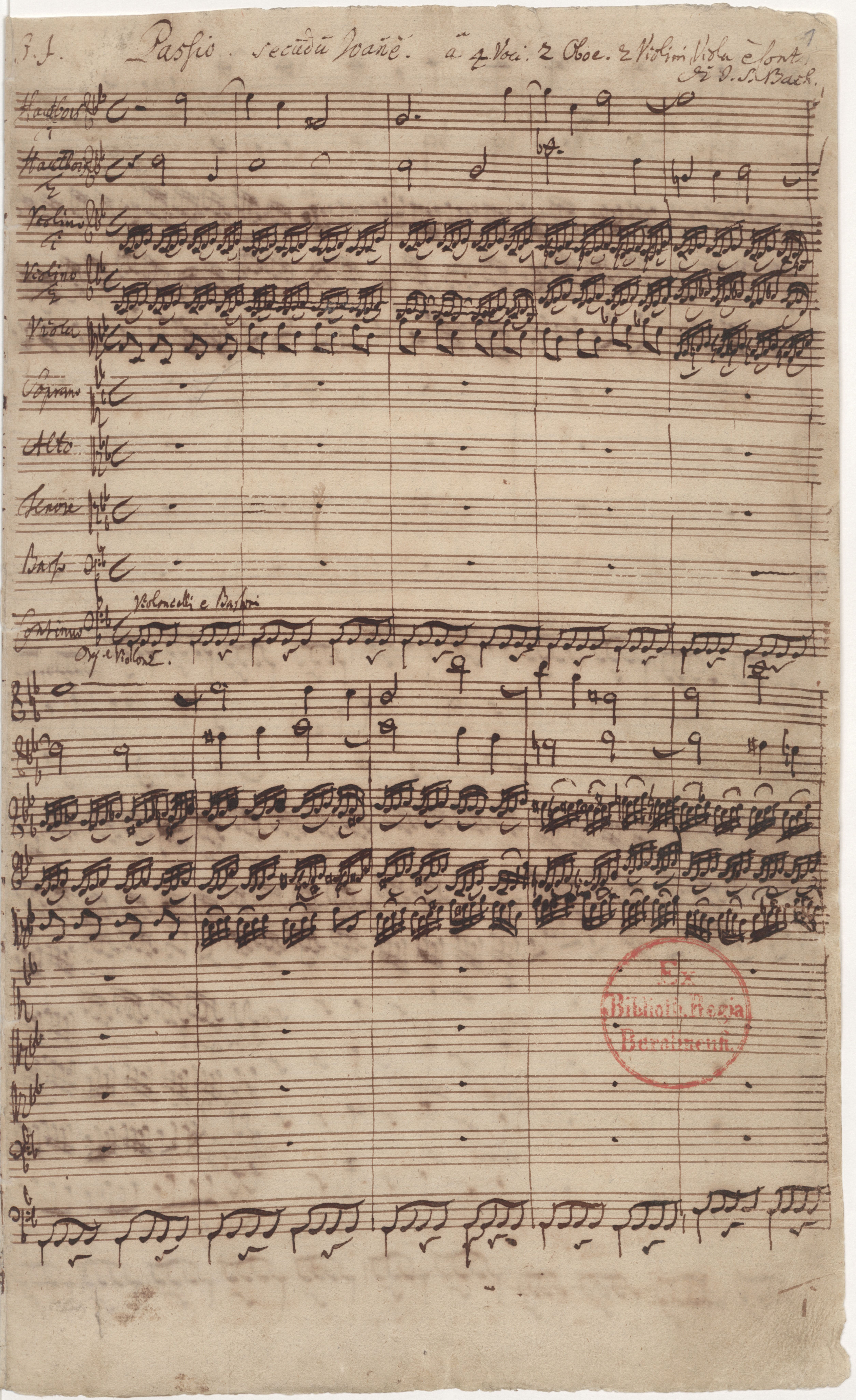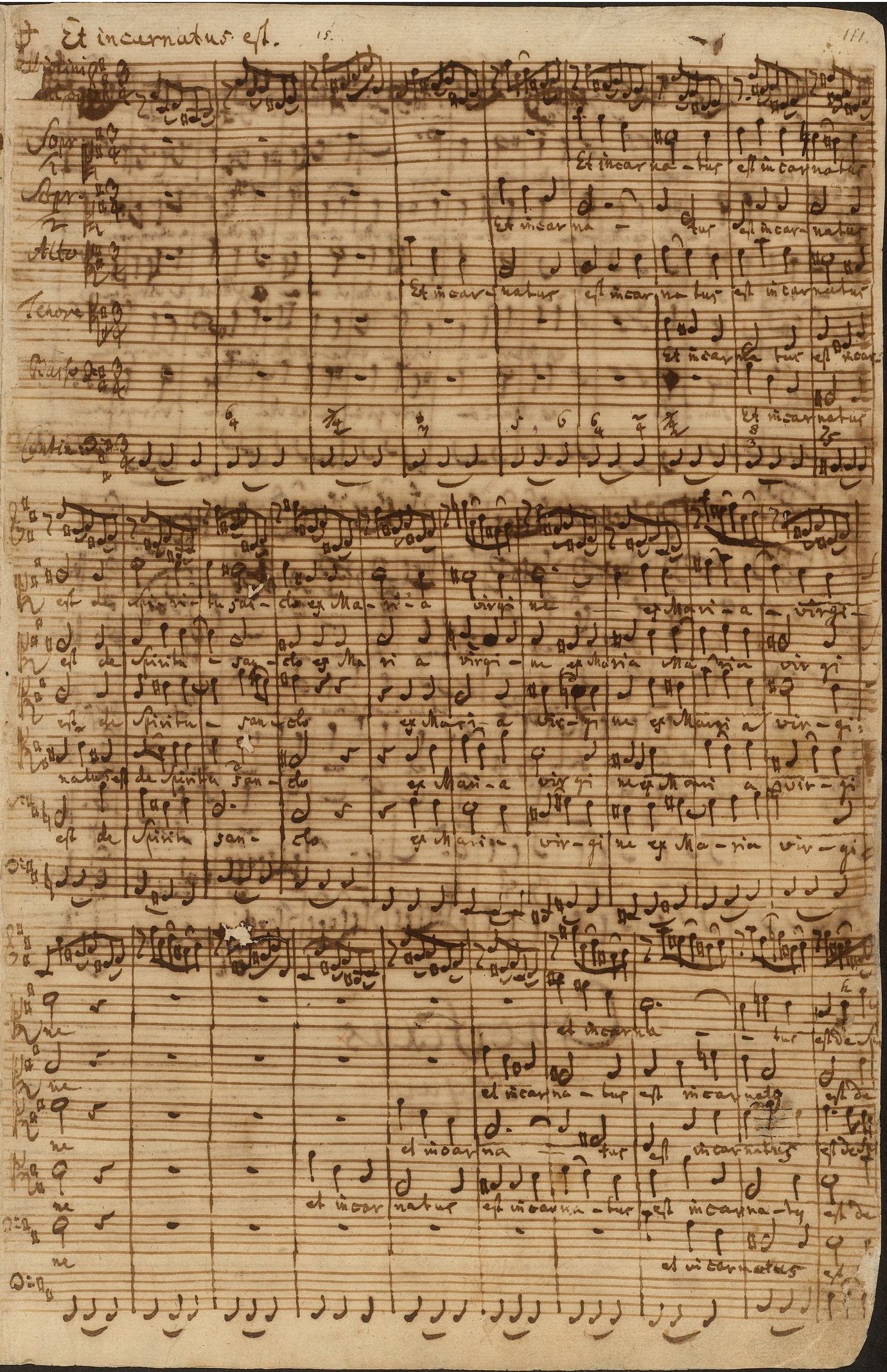|
Richard Sparks
Richard Andrew Sparks (born August 29, 1950) is an American choral conductor. He is one of the leading figures in choral music in the Pacific Northwest and in Scandinavian, especially Swedish a cappella, choral music. Early life and education Sparks was raised in Seattle, Washington. He graduated from Shorecrest High School, and he received a bachelor of music in 1976 and a master of music in 1980, both from the University of Washington. While an undergraduate, Sparks founded Seattle Pro Musica, which he led until 1980. During this time, Seattle Pro Musica became known as a leader in the "authentic performance" of Baroque music, especially Johann Sebastian Bach's. Sparks conducted Seattle Pro Musica in Claudio Monteverdi's '' Vespro della Beata Vergine'' at St. Mark's Cathedral and Handel's ''Messiah''. In the early 1980s, Sparks grew interested in Swedish choral music and the work of conductor Eric Ericson. He received doctor of musical arts in choral conducting from the Uni ... [...More Info...] [...Related Items...] OR: [Wikipedia] [Google] [Baidu] |
Conductor (music)
Conducting is the art of directing a musical performance, such as an orchestral or choral concert. It has been defined as "the art of directing the simultaneous performance of several players or singers by the use of gesture." The primary duties of the conductor are to interpret the score in a way which reflects the specific indications in that score, set the tempo, ensure correct entries by ensemble members, and "shape" the phrasing where appropriate. Conductors communicate with their musicians primarily through hand gestures, usually with the aid of a baton, and may use other gestures or signals such as eye contact. A conductor usually supplements their direction with verbal instructions to their musicians in rehearsal. The conductor typically stands on a raised podium with a large music stand for the full score, which contains the musical notation for all the instruments or voices. Since the mid-19th century, most conductors have not played an instrument when conducting, al ... [...More Info...] [...Related Items...] OR: [Wikipedia] [Google] [Baidu] |
Eric Ericson
Eric Gustaf Ericson (26 October 1918 – 16 February 2013) was a Swedish choral conductor and influential choral teacher. Life and career He graduated from the Royal College of Music (''Kungl. Musikhögskolan'') in Stockholm in 1943 and went on to complete his studies abroad, at the Schola Cantorum Basiliensis, Switzerland, and in Germany, Great Britain, and the United States. Renowned for his innovative teaching methods and the wide-ranging nature of his repertoire, Ericson was the principal conductor of the Orphei Drängar choir at Uppsala University from 1951 until 1991, and choirmaster until 1982 of the Swedish Radio Choir which was established on his initiative in 1951. Also in 1951, he began his teaching career at the Royal College of Music in Stockholm, where he became a legendary and inspirational figure, and he was appointed to the chair of choral conducting there in 1968. In 1983 Ericson received an honorary doctorate from the Faculty of Humanities at Uppsala U ... [...More Info...] [...Related Items...] OR: [Wikipedia] [Google] [Baidu] |
Liebeslieder Walzer (ballet)
''Liebeslieder Walzer'' is a two-part neoclassical ballet choreographed by George Balanchine to Johannes Brahms' '' Liebeslieder Waltzes, Op. 52'' and '' Neue Liebeslieder, Op. 65'', with original sets and lighting designed by David Hays, and costumes designed by Barbara Karinska. The ballet premiered on 12 November 1960 at the New York City Center, performed by the New York City Ballet. Structure and analysis In the first part of ''Liebeslieder Walzer'', which features 18 songs, is set in a ballroom, with the women are dressed in satin ballroom dresses and heels, while the men wears tailcoats, dancing ballroom waltz. Following a brief break with the curtains lowered, the women switch to romantic tutus and pointe shoes, while the men only take off the gloves. The doors are opened and showed the sky. This section's style resemble classical ballet The dancers eventually exit the stage, before returning two by two, in the costumes from the first half of the ballet, and listen to the ... [...More Info...] [...Related Items...] OR: [Wikipedia] [Google] [Baidu] |
Johannes Brahms
Johannes Brahms (; 7 May 1833 – 3 April 1897) was a German composer, pianist, and conductor of the mid- Romantic period. Born in Hamburg into a Lutheran family, he spent much of his professional life in Vienna. He is sometimes grouped with Johann Sebastian Bach and Ludwig van Beethoven as one of the " Three Bs" of music, a comment originally made by the nineteenth-century conductor Hans von Bülow. Brahms composed for symphony orchestra, chamber ensembles, piano, organ, violin, voice, and chorus. A virtuoso pianist, he premiered many of his own works. He worked with leading performers of his time, including the pianist Clara Schumann and the violinist Joseph Joachim (the three were close friends). Many of his works have become staples of the modern concert repertoire. Brahms has been considered both a traditionalist and an innovator, by his contemporaries and by later writers. His music is rooted in the structures and compositional techniques of the Classical masters. E ... [...More Info...] [...Related Items...] OR: [Wikipedia] [Google] [Baidu] |
All-Night Vigil (Rachmaninoff)
The ''All-Night Vigil'' ( Pre-reform Russian: ''Всенощное бдѣніе'', ''Vsénoshchnoye bdéniye''; Modern Russian: ''Всенощное бдение'') is an a cappella choral composition by Sergei Rachmaninoff, his Op. 37, premiered on 23 March 1915 in Moscow. The piece consists of settings of texts taken from the Russian Orthodox All-night vigil ceremony. It has been praised as Rachmaninoff's finest achievement and "the greatest musical achievement of the Russian Orthodox Church". It was one of Rachmaninoff's two favorite compositions along with '' The Bells'', and the composer requested that its fifth movement (Нынѣ отпущаеши, '' Nunc dimittis'') be sung at his funeral.Sergei Bertensson, Jay Leyda, Sophia Satina, ''Sergei Rachmaninoff: A Lifetime in Music'', Indiana University Press, 2001p. 191/ref> The title of the work is often mis-translated as ''Vespers''. This is both literally and conceptually incorrect as applied to the entire work; onl ... [...More Info...] [...Related Items...] OR: [Wikipedia] [Google] [Baidu] |
Sergei Rachmaninoff
Sergei Vasilyevich Rachmaninoff; in Russian pre-revolutionary script. (28 March 1943) was a Russian composer, virtuoso pianist, and conductor. Rachmaninoff is widely considered one of the finest pianists of his day and, as a composer, one of the last great representatives of Romanticism in Russian classical music. Early influences of Tchaikovsky, Rimsky-Korsakov, and other Russian composers gave way to a thoroughly personal idiom notable for its song-like melodicism, expressiveness and rich orchestral colours. The piano is featured prominently in Rachmaninoff's compositional output and he made a point of using his skills as a performer to fully explore the expressive and technical possibilities of the instrument. Born into a musical family, Rachmaninoff took up the piano at the age of four. He studied with Anton Arensky and Sergei Taneyev at the Moscow Conservatory and graduated in 1892, having already composed several piano and orchestral pieces. In 1897, following ... [...More Info...] [...Related Items...] OR: [Wikipedia] [Google] [Baidu] |
Les Noces
''Les Noces'' (French for The Wedding; russian: Свадебка, ''Svadebka'') is a ballet and orchestral concert work composed by Igor Stravinsky for percussion, pianists, chorus, and vocal soloists. The composer gave it the descriptive title "Choreographed Scenes with Music and Voices" and dedicated it to impresario Sergei Diaghilev. Though initially intended to serve as a ballet score, it is often performed without dance. The ballet premiered under the musical direction of Ernest Ansermet at the Ballets Russes with choreography by Bronislava Nijinska on 13 June 1923, in Paris. Several versions of the score have been performed, either substituting orchestra for the percussion and pianos or using pianolas in accordance with a version of the piece that Stravinsky abandoned without completing. Composition Stravinsky first conceived of writing the ballet in 1913 and completed it in short score by October 1917. He wrote the libretto himself using Russian wedding lyrics taken ... [...More Info...] [...Related Items...] OR: [Wikipedia] [Google] [Baidu] |
Igor Stravinsky
Igor Fyodorovich Stravinsky (6 April 1971) was a Russian composer, pianist and conductor, later of French (from 1934) and American (from 1945) citizenship. He is widely considered one of the most important and influential composers of the 20th century and a pivotal figure in modernist music. Stravinsky's compositional career was notable for its stylistic diversity. He first achieved international fame with three ballets commissioned by the impresario Sergei Diaghilev and first performed in Paris by Diaghilev's Ballets Russes: '' The Firebird'' (1910), '' Petrushka'' (1911), and '' The Rite of Spring'' (1913). The last transformed the way in which subsequent composers thought about rhythmic structure and was largely responsible for Stravinsky's enduring reputation as a revolutionary who pushed the boundaries of musical design. His "Russian phase", which continued with works such as '' Renard'', '' L'Histoire du soldat,'' and '' Les noces'', was followed in the 1920s by a ... [...More Info...] [...Related Items...] OR: [Wikipedia] [Google] [Baidu] |
Johannes Passion
The ''Passio secundum Joannem'' or ''St John Passion'' (german: Johannes-Passion, link=no), BWV 245, is a Passion or oratorio by Johann Sebastian Bach, the older of the surviving Passions by Bach. It was written during his first year as director of church music in Leipzig and was first performed on April 7, 1724, at Good Friday Vespers at the St. Nicholas Church. The structure of the work falls in two halves, intended to flank a sermon. The anonymous libretto draws on existing works (notably by Barthold Heinrich Brockes) and is compiled from recitatives and choruses narrating the Passion of Christ as told in the Gospel of John, ariosos and arias reflecting on the action, and chorales using hymn tunes and texts familiar to a congregation of Bach's contemporaries. Compared with the ''St Matthew Passion'', the ''St John Passion'' has been described as more extravagant, with an expressive immediacy, at times more unbridled and less "finished". The work is most often heard to ... [...More Info...] [...Related Items...] OR: [Wikipedia] [Google] [Baidu] |
Mass In B Minor
The Mass in B minor (), BWV 232, is an extended setting of the Mass ordinary by Johann Sebastian Bach. The composition was completed in 1749, the year before the composer's death, and was to a large extent based on earlier work, such as a Sanctus Bach had composed in 1724. Sections that were specifically composed to complete the Mass in the late 1740s include the "Et incarnatus est" part of the Credo. As usual for its time, the composition is formatted as a Neapolitan mass, consisting of a succession of choral movements with a broad orchestral accompaniment, and sections in which a more limited group of instrumentalists accompanies one or more vocal soloists. Among the more unusual characteristics of the composition is its scale: a total performance time of around two hours, [...More Info...] [...Related Items...] OR: [Wikipedia] [Google] [Baidu] |
War Requiem
The ''War Requiem'', Op. 66, is a large-scale setting of the Requiem composed by Benjamin Britten mostly in 1961 and completed in January 1962. The ''War Requiem'' was performed for the consecration of the new Coventry Cathedral, which was built after the original fourteenth-century structure was destroyed in a World War II bombing raid. The traditional Latin texts are interspersed, in telling juxtaposition, with extra-liturgical poems by Wilfred Owen, written during World War I. The work is scored for soprano, tenor and baritone soloists, chorus, boys' choir, organ, and two orchestras (a full orchestra and a chamber orchestra). The chamber orchestra accompanies the intimate settings of the English poetry, while soprano, choirs and orchestra are used for the Latin sections; all forces are combined in the conclusion. The Requiem has a duration of approximately 80–85 minutes. In 2019, ''War Requiem'' was selected by the Library of Congress for preservation in the Nation ... [...More Info...] [...Related Items...] OR: [Wikipedia] [Google] [Baidu] |
Benjamin Britten
Edward Benjamin Britten, Baron Britten (22 November 1913 – 4 December 1976, aged 63) was an English composer, conductor, and pianist. He was a central figure of 20th-century British music, with a range of works including opera, other vocal music, orchestral and chamber pieces. His best-known works include the opera '' Peter Grimes'' (1945), the '' War Requiem'' (1962) and the orchestral showpiece '' The Young Person's Guide to the Orchestra'' (1945). Born in Lowestoft, Suffolk, the son of a dentist, Britten showed talent from an early age. He studied at the Royal College of Music in London and privately with the composer Frank Bridge. Britten first came to public attention with the ''a cappella'' choral work '' A Boy was Born'' in 1934. With the premiere of ''Peter Grimes'' in 1945, he leapt to international fame. Over the next 28 years, he wrote 14 more operas, establishing himself as one of the leading 20th-century composers in the genre. In addition to large-scal ... [...More Info...] [...Related Items...] OR: [Wikipedia] [Google] [Baidu] |






